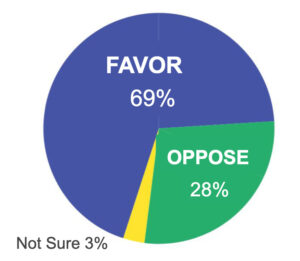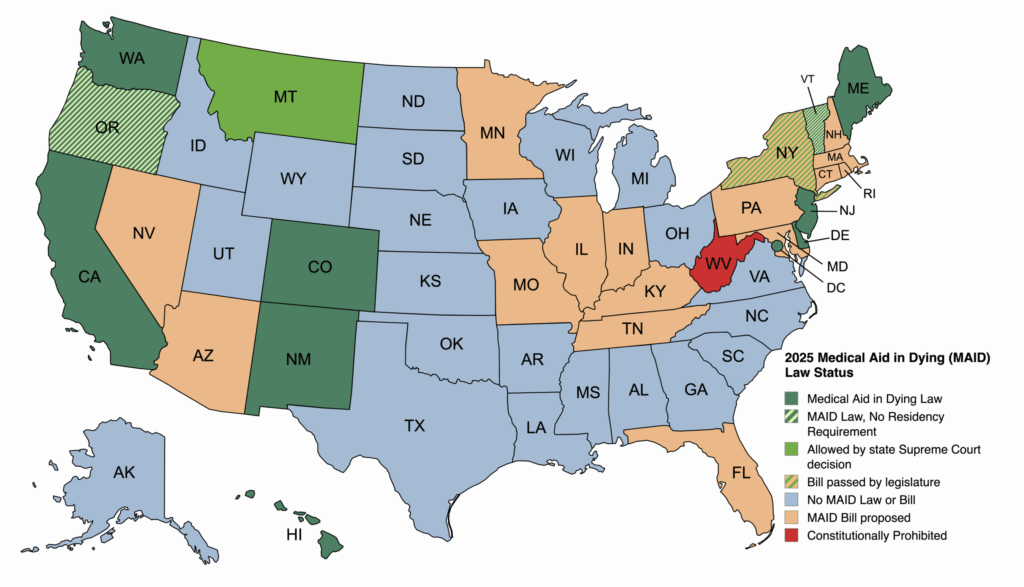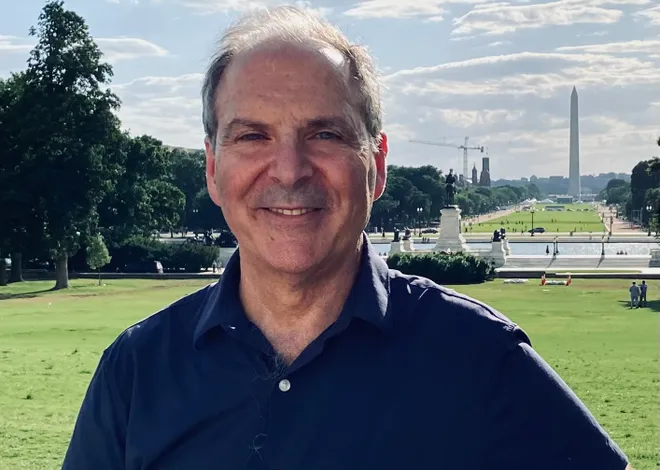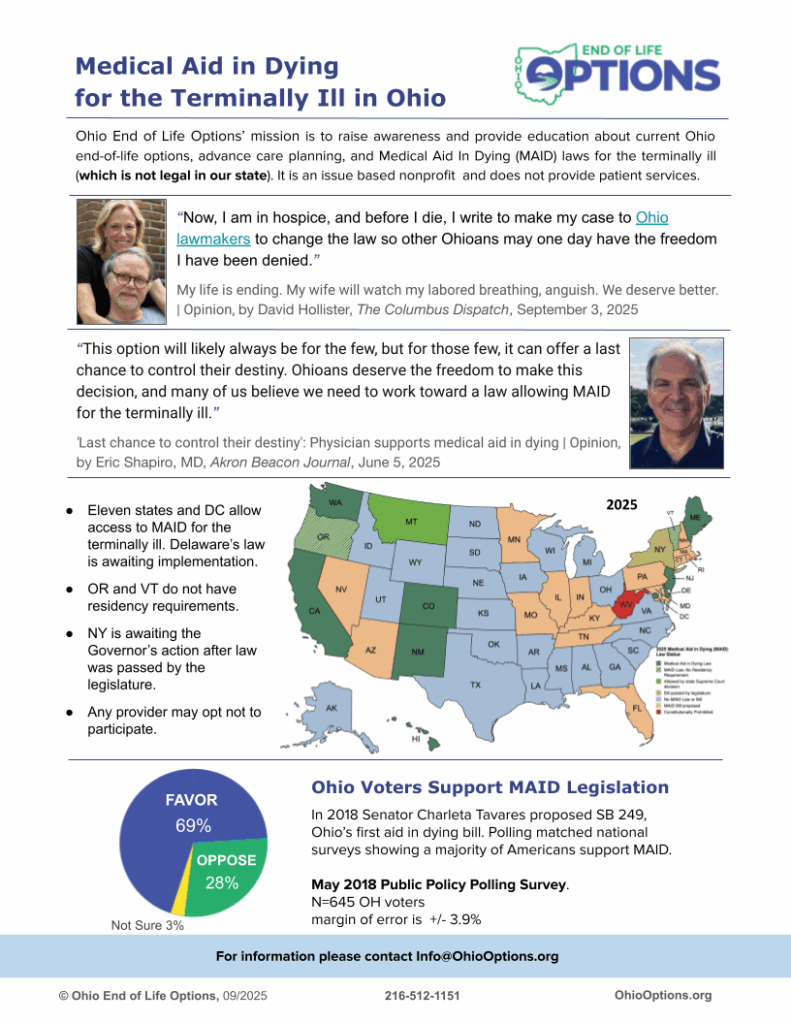FACT SHEET
Medical Aid in Dying (MAID) for Terminally Ill in Ohio
Take Action
Ohio Voters Support MAID Legislation
 May 2018 Public Policy Polling Results
May 2018 Public Policy Polling Results
Poll results on medical aid in dying among Ohio voters show 69% support, 28% oppose, and 3% are unsure. The survey included 645 Ohio voters and has a margin of error of ±3.9%.
Healthcare organizations across the country are studying the issue. To learn more please contact Lisa Vigil
Schattinger, MSN, RN at Info@OhioOptions.org for information, or visit the Ohio Options Contact Us page.
MAID Status Nationally
Eleven states and DC allow access to MAID for the terminally ill.
● OR and VT no longer have residency requirements.
● APRNs may act as providers in CO, HI, NM, and WA.
● Any provider may opt not to participate.
● New York’s bill is awaiting action by its governor.
More states are considering legislation. The 2025 map below shows states with laws in green.

National Healthcare Organizational Stances
Supportive:
- American College of Legal Medicine
- American Medical Student Association
- American Medical Women’s Association
- American Public Health Association
- GLMA: Health Professionals Advancing LGBTQ Equalit
Neutral
- American Academy of Family Physicians
- American Academy of Hospice & Palliative Medicine
- American Academy of Neurology
- American Nurses Association
- Hospice and Palliative Nurses Association
Source: Healthcare Professional Associations that Recognize Medical Aid in Dying,
Compassion & Choices, Revised 10/3/2024
The Facts About Medical Aid in Dying for the Terminally Ill
Medical Aid in Dying (MAID) laws provide the option for a terminally ill, mentally-capable adult to end their life when and where they choose by requesting a prescription from their doctor. The laws define a strict, voluntary, multi-step eligibility process with multiple safeguards. It is not legal in Ohio.
The vast majority of patients who have obtained a prescription were also enrolled in hospice care.
Medical Aid in Dying laws are referred to by the acronym MAID and are also known as Death with Dignity laws. In the U.S., these laws always apply only to mentally capable adults with terminal illnesses.
There are strict requirements. The person making the request must be:
- an adult
- have a terminal illness with six months or less to live
- be able to make informed health care decisions
- be able to independently self-administer the medication
- Two providers must agree on the above.
- Advanced age, disability, and dementia are not qualifying terminal illnesses.
Medical Aid In Dying is optional. It is optional for patients and healthcare providers. No person is required to use it and no doctor is mandated to prescribe the medication. All healthcare providers may opt out of participation.
Only the patient can request the prescription and the patient alone decides if and when to take it. The patient must be able to self-administer the medication independently. This may not be written into the Living Will of an Advance Directive.
In 1994, Oregon was the first state to pass a MAID bill. In the decades-long history since implementation in 1998, the safeguards have proven effective.
Medical Aid in Dying can provide comfort and control when a patient faces the uncertainties and suffering of a terminal illness. Patients report that just having this option relieves fear and anxiety —
even for those who never choose to use it
Current Options for End of Life Care in Ohio
When diagnosed with serious or terminal illness, people may opt to start, stop or not start treatments.
- Palliative care for serious and terminal illness includes focus on quality of life and symptom management.
- Hospice is for the terminally ill with six months or less to live and no curative treatments.
- Hospice also focuses on quality of life and symptom management.
- Voluntarily Stopping Eating and Drinking (VSED)
- Palliative Sedation in an inpatient setting
- Advance Directive: Appoint Health Care Proxy and direct care if terminally ill AND not capable of making decisions OR in a permanently unconscious state.
“I do not know what God has planned for us after death, all I know is that we will ALL find out at some point. I cannot believe that he is a vindictive God and would punish one of his children for accelerating the time of their meeting by a few days, weeks, or months.”



